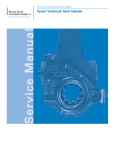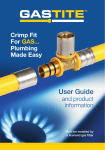Download SERVICE MANUAL SERVICE MANUAL
Transcript
L30037 9/03 SERVICE M A N UA L S-ABA SELF-SETTING AUTOMATIC BRAKE ADJUSTERS Innovative Vehicle Technology Table of Contents S-ABA Operation . . . . . . . . . . . . . . . . 1 S-ABA Brake Adjuster Identification . . 1 Steer Axle Applications . . . . . . . . . . . . 2 Drive Axle Applications . . . . . . . . . . . . 2 Trailer Axle Applications . . . . . . . . . . . 3 S-ABA Installation Procedures . . . . . . 4 Routine Visual/Operational Checks . . 6 Service and Lubrication Intervals . . . . 6 Foundation Brake Operational Check and Troubleshooting . . . . . . . . 7 Brake Adjuster Checking Procedures . 9 Brake Adjuster Operational Check . . . 9 Typical Parts Identification and Location . . . . . . . . . . . . . . . . . . 10 Torque Specifications . . . . . . . . . . . . 11 Frequently Asked Questions . . . . . . . 12 Additional Parts and Service Information . . . . . . . . . . . . . 13 Important Notice This symbol is used throughout the manual to call attention to procedures where carelessness or failure to follow specific instructions may result in personal injury and/or component damage. The description and specifications contained in this service publication are current at the time of printing. Haldex Brake Products Corp. reserves the right to discontinue or modify its models and/or procedures and to change specifications at any time without notice. S-ABA Operation The Haldex S-ABA automatic brake adjuster is a clearance sensing brake adjuster that maintains a nominal distance or clearance between lining and drum. When the Adjuster is Installed: With the brake in the released position, the control arm is fixed to the anchor bracket. The adjustment hex is rotated until the shoes contact the brake drum and then backed off 1/2 turn. When the brake is applied on the first application, the endless rack rotates to the correct position and sets itself. When the Brake Applies: When the brake is applied, the adjustment regulator rotates through the normal clearance angle and the shoes contact the drum. The torque increases and the wormshaft is moved axially, causing the coil spring to be compressed and the clutch wheel to disengage. The adjustment components are free to rotate as the brake continues to apply. Worm Wheel Control Disc Coil Spring Wormshaft Heat Treated Housing Serial Number: First 3 digits = Day of year built Last 2 digits = Year of build Clutch Wheel Adjustment Hex When the brake is released, the torque decreases returning the wormshaft to the clutch wheel and re-engaging the teeth. The adjustment regulator rotates through the normal clearance angle and the brake is released. If lining wear has taken place the adjustment regulator advances the clutch wheel reducing the excess clearance during the release stroke. The Part No. P/N40920002 would be our adjuster part number 409-20002. Part Number P/N40920002 Serial Number S/N26802 1 One-Way Clutch When the Brake Releases: S-ABA Identification Part Number: 409-20_ _ _ = S-ABA Brake Adjuster Regulator Gear Typical Applications Steer Axle Figures 1 and 2 show typical brackets for automatic brake adjuster applications on steer axle brake assemblies. Refer to pages 4 and 5 for detailed installation procedures. Figure 1 Steer axle with clamp bracket and flat anchor stud Figure 2 Steer axle with strap bracket Drive Axle Figures 3 and 4 show typical brackets for automatic brake adjuster applications on drive axle brake assemblies. Refer to pages 4 and 5 for detailed installation procedures. Figure 3 34° drive axle with strap bracket Figure 4 Mack drive axle with clamp bracket and flat anchor stud Note: Refer to fundamental parts identification and location on page 10. 2 Typical Applications Trailer Axle Figures 5-8 show typical brackets for automatic brake adjuster applications on trailer axle brake assemblies. Refer to pages 4 and 5 for detailed installation procedures. 3 Figure 5 For 16-1/2" Brake Assemblies Figure 6 For 12-1/4" Brake Assemblies Figure 7 Integral cam support anchor bracket for 12-1/4" and 16-1/2" brakes Figure 8 Bolt-on cam support anchor bracket for 12-1/4" and 16-1/2" brakes Note: Refer to fundamental parts identification and location on page 10. S-ABA Installation Procedures Note: Configuration of anchor bracket and brake adjuster housing may vary, depending upon axle. Refer to typical applications on Pages 2 and 3. Step 1 Note: Block wheels to prevent vehicle from rolling. Ensure system tank pressure is above 100 PSI. ■ Check that the push rod is fully retracted; apply air to release spring brake. If air is not available, spring brake must be manually caged back. ■ Install anchor bracket loosely as illustrated ( fig. 9). ■ Some strap brackets have two mounting holes. Proper mounting location is determined by the length of adjuster arm. 5" and 5-1/2" adjuster arm lengths utilize the shorter hole location while 6" and 6-1/2" length adjusters utilize the longer hole locations. ■ Do not tighten anchor bracket fasteners at this time. ■ Apply “Anti-Seize” type lubricant to camshaft splines. Figure 9 Step 2 ■ Install the brake adjuster onto the camshaft with the ad justing hex pointing away from the brake chamber (fig. 10). ■ Secure the brake adjuster on the camshaft. Use at least one inner washer and enough outer washers to allow no more than .060 movement of adjuster on camshaft. (Per TMC recommended practice RP609-A.) Note: Do NOT pull push rod out to meet the brake adjuster. Figure 10 ■ Rotate the 7/16" adjusting hex nut CLOCKWISE until the clevis hole lines up with the brake adjuster arm hole. ■ Apply anti-seize to clevis pin, install and secure with cotter pin. 4 S-ABA Installation Procedures Step 3 Figure 11a ■ The S-ABA control arm can be placed anywhere within the range of the bracket slot for automatic adjustment to take place. Haldex recommends, however, rotating all control arms towards the axle until they come to a complete stop (fig. 11a,b,c) and securing in that position. This will create a “common” position for all wheels. Figure 11b Tighten all anchor bracket fasteners. Figure 11c Step 4 ■ The adjuster must be manually adjusted at this time. ■ Rotate the adjusting hex clockwise until the lining lightly contacts the drum. ■ Then, back-off the adjuster by turning the adjusting hex counter-clockwise 1/ 2 of a turn (fig. 12). ■ A minimum of 13 ft. lbs. is necessary to overcome the internal clutch. A ratcheting sound will be present. ■ Do NOT use an impact wrench or permanent internal damage will occur! Note: To ensure proper fit and function, always replace both adjuster and mounting bracket, as a set. 5 Figure 12 Routine Visual/Operational Checks ■ Haldex strongly recommends that routine visual/operational checks, including brackets and control arms, be performed at each Preventative Maintenance Service Interval. ■ Adjusters or anchor brackets that have visual damage, or which fail the operational checks, MUST be replaced immediately. ■ Automatic adjusters should not be operated as manual adjusters except as may be necessary to get the vehicle off the road for service. Service and Lubrication Intervals for Standard Haldex AA1 and S-ABA Brake Adjusters Adjuster Type Standard Adjuster 409-10... Manufacture Lubrication Date Interval Prior to 6/1/96 Type of Lubricant Visual Check Interval 50,000 miles or every 3 months Standard Chassis Grease Each Preventative Maintenance Service Interval Reduced Maintenance After 6/1/96 Adjuster 409-10... Once a year Standard Chassis Grease Each Preventative Maintenance Service Interval No-Lube™ Adjuster 429-10... After 6/1/96 None Sealed Unit Each Preventative Maintenance Service Interval S-ABA Adjuster 409-20... n/a Once a year Standard Chassis Grease Each Preventative Maintenance Service Interval Notes: No-Lube™ automatic brake adjusters are manufactured without a grease fitting and are identified by a 429 prefix. Moly-disulfide grease should not be used because it may affect the function of the internal friction clutches and reduce the reliability of the automatic adjustment. In no case should the lubrication interval exceed the published intervals shown above. 6 Foundation Brake Operational Check and Troubleshooting Note: ■ Block wheels to prevent vehicle from rolling. ■ Ensure system reservoir pressure is at 90-100 psi. ■ Check that push rod is fully retracted; apply air to release spring brake. North American Commercial Vehicle Safety Alliance (CVSA) Uniform Vehicle Inspection Criteria The applied stroke of the brake should be checked per CVSA guidelines at 90 -100 PSI reservoir pressure. Applied stroke should be at or less than the specified re-adjustment limits as follows: Standard Clamp Type Brake Chamber Type Adjustment Limit Type Adjustment Limit 9 1-3/8" 24 1-3/4" 12 1-3/8" 30 2" 16 1-3/4" 36 2-1/4" 20 1-3/4" Long Stroke Type Type Adjustment Limit 16L 2" 20L 2" 24L 2" Brake Chamber Type Adjustment Limit 24LS 2-1/2" 30LS 2-1/2" NOTE: Long stroke chambers are identified with square air ports or port bosses and special trapezoid ID tags. Free Stroke Measuring the Free Stroke Free stroke is the amount of movement of the adjuster arm required to move the brake shoes against the drum. With brakes released, measure from the face of the chamber to the center of the clevis pin “A” (fig. 13). Use a lever to move the brake adjuster until the brake shoes contact the drum “B” (fig. 13). The difference between the fully retracted and drum contact measurement “B”–“A” (fig. 13), is the free stroke. The free stroke range should fall between 3/8"–3/4". Free Stroke Within Range If the free stroke is good, but the applied stroke is too long, there is probably a problem with the foundation brake. Check the following and reference CVSA out-of-service criteria: Component Brake drums Brake shoes Brake shoes Brake shoes Brake shoes Cam bushings Camshaft Camshaft Camshaft Chamber bracket Clevis yoke and pin Return springs Rollers Rollers Spider anchor pins 7 Cause Cracked or out of round Shoe span out of spec Uneven lining wear Shoe pad missing Cracked shoes Excessive movement Flat spots on cam head Cracked/broken splines Worn bearing journals Broken/bent Worn Broken/stretched or missing Flat spots, grooved pin/worn Wrong size Grooved or scored/worn Action Replace or check drum run out Refer to OEM specs and replace if necessary Check spider concentricity Remove & replace shoes Remove & replace shoes Remove & replace cam bushings per OEM specs Replace camshaft Replace camshaft Replace camshaft Replace bracket Remove & replace Remove & replace springs Remove & replace roller and pin Remove & replace with correct parts Replace spider or pins, as appropriate for OEM Free Stroke Above the Range If the free stroke is above the range and the applied stroke is too long, there is a problem with the foundation brake or the adjuster. Check the following: Component Cause Action Camshaft Camshaft bushings Camshaft bushings Air chamber return springs Air chamber push rod Binding Excessive movement Binding shaft Broken, weak, missing Binding on chamber housing Air system Shoe return springs Automatic brake adjuster Not exhausting completely Broken, weak, missing Unknown Automatic brake adjuster Unknown Remove, replace, lubricate camshaft Remove and replace cam bushings per OEM specs Lubricate camshaft bushings or replace Replace chamber Check adjuster for proper shimming and air chamber position for proper adjuster arm length Check for cause of air problem and repair Replace springs Check automatic brake adjuster for proper installation. Refer to Installation Instructions on pages 4 & 5. Refer to Automatic Brake Adjuster Checking Procedures and Operational Check on pages 9 & 10. Free Stroke Below the Range If the free stroke is less than 3/8”, a dragging brake can occur. Check the following: Component Cause Action Wheel bearing Automatic brake adjuster Out of adjustment Unknown Automatic brake adjuster Unknown Readjust per OEM specs Check automatic brake adjuster for proper control arm position. Refer to Installation Instructions on pages 4 & 5. Refer to Automatic Brake Adjuster Checking Procedures and Operational Check on pages 9 & 10. Free Stroke = B minus A Applied Stroke = C minus A A (Fully Retracted) B (Drum Contact Using a Lever) C (Brake Application at 90-100 PSI reservoir pressure.) Figure 13 Stroke Measurements (taken from face of air chamber to center of clevis pin) 8 Automatic Brake Adjuster Checking Procedures If the brake adjuster is not maintaining the proper applied stroke, before removing the brake adjuster, check the condition of the foundation brake (see pages 7 & 8). If after inspecting the foundation brake no apparent problems are found, inspect the automatic brake adjuster to determine if it is operating properly. The inspection can be performed on or off the vehicle using the following procedures. Note: ■ Block wheels to prevent vehicle from rolling. ■ Ensure system reservoir pressure is at 90-100 PSI. ■ Check that push rod is fully retracted; apply air to release spring brake. ■ If air is not available, spring brake must be manually caged back. ■ Do not use air tools on brake adjuster! On Vehicle Inspection Component Excessive chamber push rod travel Cause Improper anchor bracket connection to control arm Action If anchor bracket to control arm connection is worn, loose, bent or broken, it must be re-secured or replaced. Low clutch torque Rotate the 7/16" adjustment hex one full turn counterclockwise. Replace brake adjuster if the torque is less than 13 ft. lbs. or no racheting sound occurs. Unknown Perform automatic brake adjuster operational check (see below). Automatic Brake Adjuster Operational Check Functional operation of the brake adjuster can be performed on the vehicle by using the following procedure: ■ Block wheels to prevent vehicle from rolling. ■ Ensure reservoir pressure is at 90-100 psi. ■ Check that the push rod is fully retracted; apply air to release spring brake. If air is not available, spring brake must be manually caged back. Manually de-adjust brakes (turn adjustment hex counterclockwise one full turn) to create an excessive lining to drum clearance condition. (A ratcheting sound should occur.) Make a full service brake application. On release, allow sufficient time for air chamber to fully retract. During the brake release, observe rotation of the adjustment hex (attaching a wrench on the hex or scribing the hex will make this rotation easier to see). This rotation indicates that an excessive clearance condition has been determined by the brake adjuster, and it is making an adjustment to compensate. On each subsequent brake release, the amount of adjustment and push rod travel will be reduced until the desired lining to drum clearance is achieved. If rotation of the adjustment hex is not observed, refer to Foundation Brake Operational Check and Troubleshooting Procedures on pages 7 & 8. If foundation brake assembly checks out okay and hex still does not turn, check control arm and mounting bracket for possible worn, bent or broken components. If the control arm and mounting bracket check out okay, replace the adjuster and hardware per Installation Instructions on pages 4 & 5. 9 Off Vehicle Inspection Component Cause Action Adjuster not functioning properly Low clutch torque Place adjuster arm in vise. Rotate the 7/16" adjustment hex counterclockwise one full turn to check de-adjustment torque. After control arm stops rotating, a minimum of 13 ft. lbs. will be required and a ratcheting sound will occur. Replace brake adjuster if the torque is less than 13 ft. lbs. or no de-adjustment ratcheting sound is present. Control Arm slippage Place adjuster arm in vise. Rotate the control arm counterclockwise until the control arm rotates to an INTERNAL STOP. If the arm slips freely, replace the brake adjuster. Unknown If torque is above 13 ft. lbs., scribe a line on the adjustment hex. Manually pull the brake adjuster control arm clockwise then push back counterclockwise. The hex will move in a clockwise direction when the control arm of the brake adjuster is pushed back counterclockwise. Replace adjuster if hex does not move. Worn/missing control arm wear bushing, and anchor stud pin, if applicable. Remove and replace pin and bushings. If adjuster has passed the above checks, re-install adjuster on vehicle, with new hardware. Typical Parts Identification and Location Anchor Bracket Anchor Stud Pin Control Arm (Single Bend) Anchor Bracket Wear Bushing Anchor Stud Pin Wear Bushing Adjustment Hex Nut Control Arm 10 Torque Specifications Note: Tighten all fasteners to manufacturer’s recommendations unless otherwise specified below. Round Anchor Stud Pin with Fabricated Ring Clamp Torque to 15-20 ft. lbs. when installed Flat Anchor Stud Pin Torque to 40-50 ft. lbs. when installed Round Anchor Stud Pin with Slide Nut Torque to 15-20 ft. lbs. when installed 3/8"-16 Nut and Bolt Torque to 15-20 ft. lbs. when installed Strap Style Bracket Torque to 8-12 ft. lbs. when installed U-Bolt Style Bracket Torque to 20-30 ft. lbs. when installed 11 Frequently Asked Questions 1. Will the side of the brake adjuster with the face plate always face in? No. Haldex adjusters are normally unhanded. Always install with the adjusting hex pointing away from the air chamber. 2. Why is there resistance when backing off the adjuster? It takes approximately 20 lb. ft. of torque to back off the adjustment hex on a new brake adjuster. (A ratcheting sound should occur.) 3. How far do I back off the automatic brake adjuster at a brake reline? 1/2 turn. 4. How do I know if I need an offset, angled or straight-armed adjuster? Haldex manufactures the right adjuster arm for your specific application. Haldex adjusters are unhanded (no lefts or rights) in the majority of applications. Please refer to the Haldex Parts and Cross Reference Guide for your specific application (L00090). 5. Why does my replacement ABA look different from the original I took off? The Haldex ABA replacement adjuster has been designed to fit a number of applications. It is the same original equipment quality and design of the adjuster you removed; however, it may look different on the outside. If you use all the parts included in the kit, the results will be the same as the original equipment adjuster. 6. Why is the applied stroke pressure range 90-100 psi at the reservoir? This is the pressure recommended by the CVSA (Commercial Vehicle Safety Alliance). Anything beyond 100 psi measures deflection within the foundation brake and not true push rod stroke. 7. Some brake chambers have round port openings and some square; what is the difference? Standard brake chambers are identified by round ports. Long stroke chambers are identified by square ports and trapezoid ID tags. 8. Can I vary the amount of lining-to-drum clearance by moving the control arm? No, that clearance is set at the factory. If long or short stroke continues, please refer to the foundation brake checking procedures on pages 9 & 10 of this manual. 9. Can I use an air ratchet on the adjuster? No. It will damage the internal mechanism of the adjuster and render it inoperative. 10.Can I access the adjuster through the rear cover? No, do not tamper with the rear cover—it will release the factory set pressure on the spring and destroy the adjuster and its ability to properly function. 11.How much control arm bushing and anchor stud pin wear is acceptable before replacement is required? No more than 1/16." 12.What is the acceptable amount of camshaft bushing wear? Automatic adjusters cannot compensate for worn foundation brake parts. Please refer to the foundation brake manufacturer’s recommendations for maximum bushing and camshaft wear limits. 13.Can wheel bearing adjustment affect the brake adjuster? Yes. Improper wheel bearing adjustment could result in improper brake adjustment. It is necessary to refer to the axle manufacturer’s wheel bearing adjustment recommendations. A loose bearing preload could cause a tight brake. 14.Are all Haldex automatic brake adjusters pre-lubed? Yes. All Haldex brake adjusters are lubricated at the factory. Please consult the Service and Lubrication Section on Page 6 for proper lubrication guidelines. (continued on page 13) 12 Frequently Asked Questions (continued) 15.Can I use moly lube with the Haldex automatic brake adjuster? 17.Does the control arm need to be properly set and secured? No. A high concentration of moly-disulfide can lower the friction capabilities in the adjusting clutch parts and decrease automatic adjustment reliability. 16.Can I purchase anchor bracket wear items separately (i.e., anchor stud pins, wear bushings)? Yes. Normal wear items like anchor stud pins and wear bushings are available. Refer to the Haldex Parts and Cross Reference Guide, L00090. Otherwise, contact Haldex Technical Assistance for the appropriate bracket kit at 1-800-643-2374. Yes. Without proper placement and attachment, the adjuster will not function properly. Make sure the control arm, anchor bracket and wear items are in good working order to assure the adjuster will operate as designed. 18.If automatic adjustment stops, can I operate as a manual brake adjuster? No. Completely check out foundation brake and adjuster to determine cause of problem. Repair or replace as needed to restore automatic adjustment. Additional Information Available Additional parts and service information on Haldex Automatic Brake Adjusters may be found in the following materials: Service Information Installation and Maintenance Wall Chart . . . . . . . . . . L60047 Service Manual (Truck/Trailer) . . . . . . . . . . . . . . . . . L30037 Parts Information Parts and Cross Reference Guide (Truck/Trailer) . . . L00090 These materials may be ordered by contacting your Customer Service Representative at 1-800-643-2374. Or, you may log in to our website www.hbsna.com with your customer password to place your order. 13 Notes 14 Notes 15 Haldex Commercial Vehicle Systems North American Sales Division Haldex Brake Products Corporation 10707 N.W. Airworld Drive Kansas City, MO 64153-1215 Phone: (816) 891-2470 Fax: (816) 880-9766 North American Sales Division Haldex Limited 525 Southgate Drive, Unit 1 Guelph, Ontario CANADA N1G 3W6 Phone: (519) 826-7723 Fax: (519) 826-9497 9/03 2.5M ART L30037 © 2003 The Haldex Corporation




















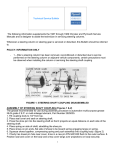


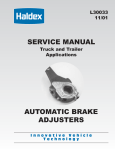
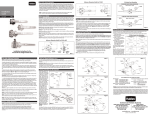
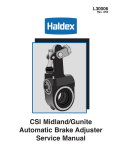

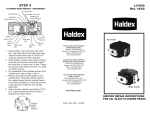

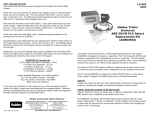
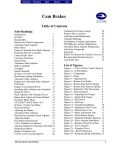

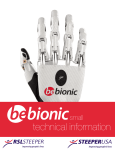


![Web Only [L31123W] Nov-2001](http://vs1.manualzilla.com/store/data/006261811_1-4af033c8ff7f86bb4ac91ee243d7e1f2-150x150.png)


